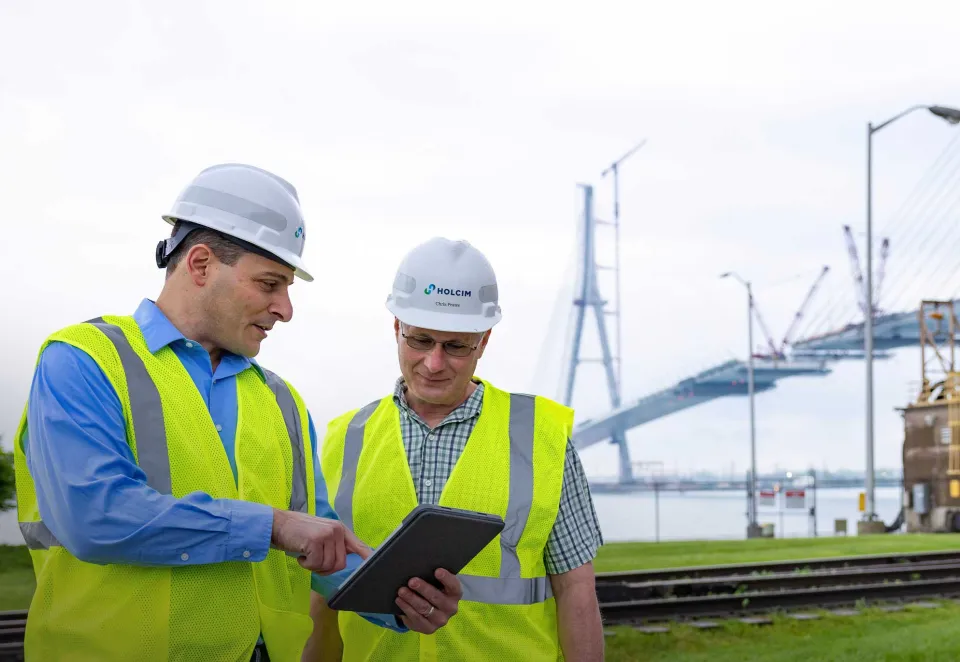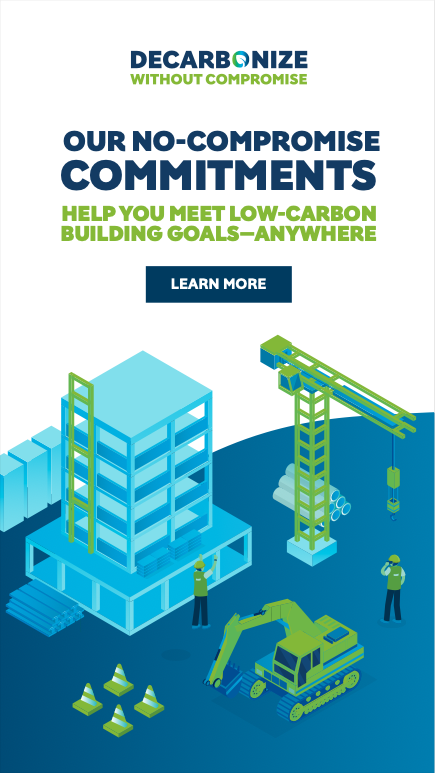Environmental Product Declarations:
Catalysts for Sustainable Progress in Construction
As the construction industry evolves, Environmental Product Declarations (EPDs) are becoming a vital requirement in project bids, especially for government contracts and green building certifications. These declarations, akin to nutritional labels, objectively detail the environmental impact of building products. Access to EPDs offers a competitive edge in bid compliance and saves time and resources in providing sustainability information. Accelerating decarbonization in the built environment is critical to stabilizing global warming and mitigating the impacts of climate change. With the proliferation of government “Buy Clean” initiatives and private-sector climate-action alliances, such as the First Movers Coalition, EPDs create industrywide pathways for achieving a more sustainable, net-zero carbon future.
EPDs 101: Watch the video below
The Essence of EPDs in Holcim’s Strategy
Being a leader in sustainability and innovation lies at the core of Holcim’s accelerating green growth strategy. As a central component to executing this strategy, EPDs offer full transparency on the environmental footprint of our low-carbon products, such as ECOPlanet™ cements and ECOPact™ concrete. Conducting a life cycle assessment (LCA) of these innovative and sustainable building solutions is a key step in our EPD-development process. This analysis, which is conducted independently, spans from raw material extraction to end-of-life, ensuring consistent environmental impact quantification.
Role of EPDs in Holcim’s Green Journey
There are three main types of EPDs defined by ISO standards. Of these, Type III EPDs, which are based on a valid PCR and independent verification, are the most relevant to Holcim’s cement and concrete construction materials. They require a full LCA and third-party certification.
Holcim US, in alignment with our net-zero journey to decarbonize the built environment, is committed to providing best-in-class environmental reporting. To that end, we publish EPDs for products produced at all Holcim US facilities to ensure project teams have detailed disclosures on materials with which they are working. This also aligns with our global commitment to a net-zero future, focusing on green operations and circular construction principles.

EPDs in Green Building and “Buy Clean” Initiatives
As EPDs gain prominence in assessing environmental performance, they are increasingly being specified in green building standards and codes. They are also required by many green building rating systems, such as LEED. Within the Materials and Resources category of LEED v4, project teams earn points based on the type of EPDs and the level of transparency.
A variety of existing and proposed government procurement policies at national and local levels mandate the collection of independent third-party verified EPDs. The Federal Buy Clean Initiative requires plant-specific EPDs for projects funded by the Infrastructure Investment and Jobs Act and the Inflation Reduction Act. If they are not already doing so, most state, county and city Buy Clean legislative directives will soon follow suit by requiring this higher level of disclosure in public works projects.
Balancing Performance and Sustainability with EPDs
In support of our green formulation ambitions, the transition of our ready-mix concrete markets to low-carbon products, such as OneCem® Portland Limestone Cement, exemplifies our commitment to incremental change and transparency. EPDs provide a crucial tool in this endeavor, balancing CO2 performance tracking with the deployment of technologies that maintain quality and optimal performance on job sites.
In summary, the development and use of EPDs is deeply integrated into Holcim US's strategy for advancing a global net-zero carbon future. These environmental report cards not only facilitate transparency and sustainable construction but they also underscore our commitment to continuous improvement and leadership in the construction industry’s progress toward decarbonization.
Contact your local sales representative to learn more about the ways our EPDs and innovative portfolio of low-carbon products can help you meet the complex sustainability and performance challenges of your building and construction projects.







